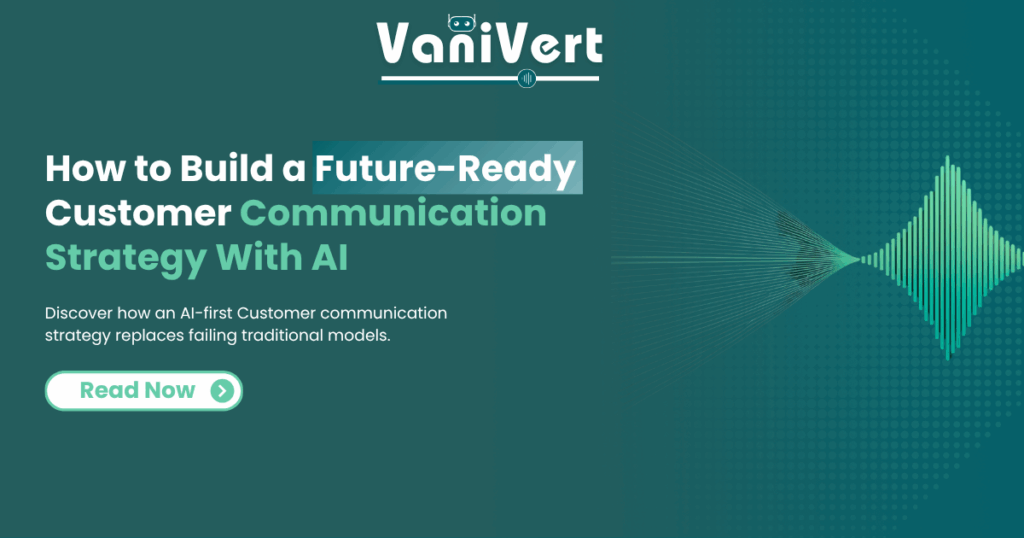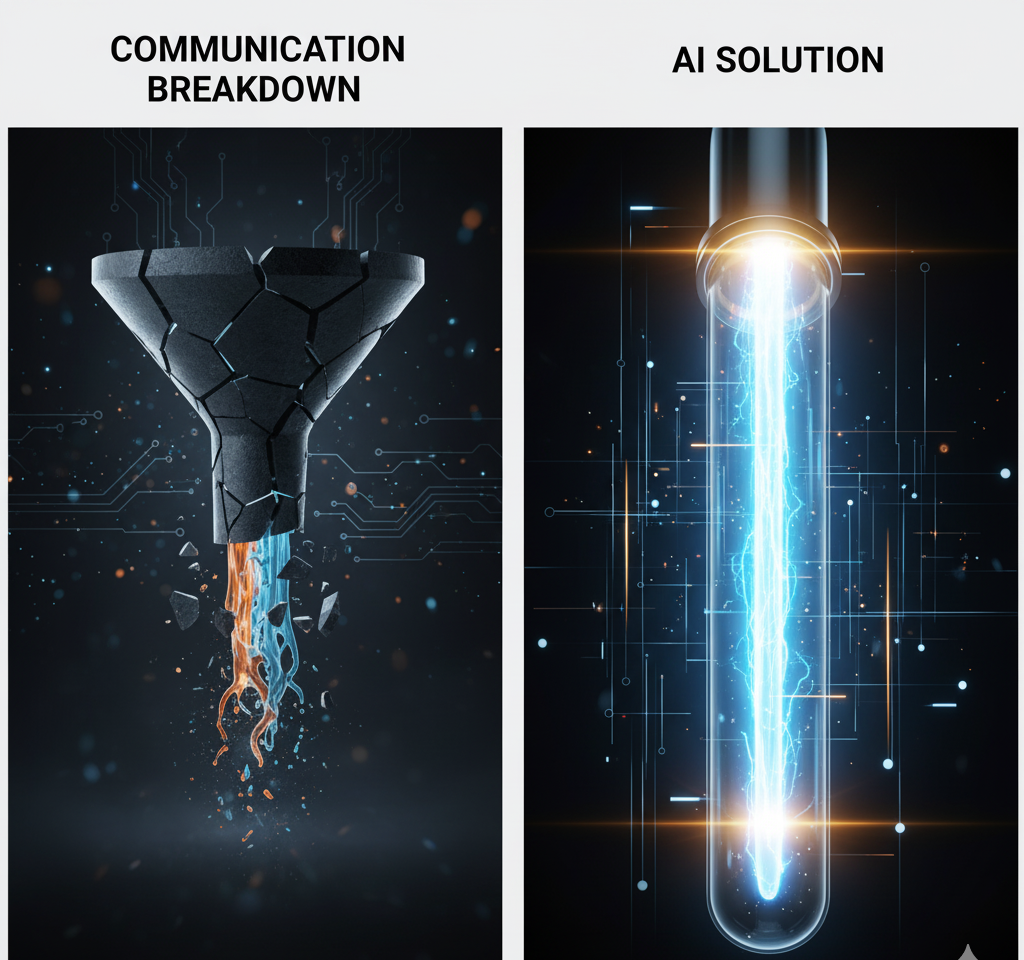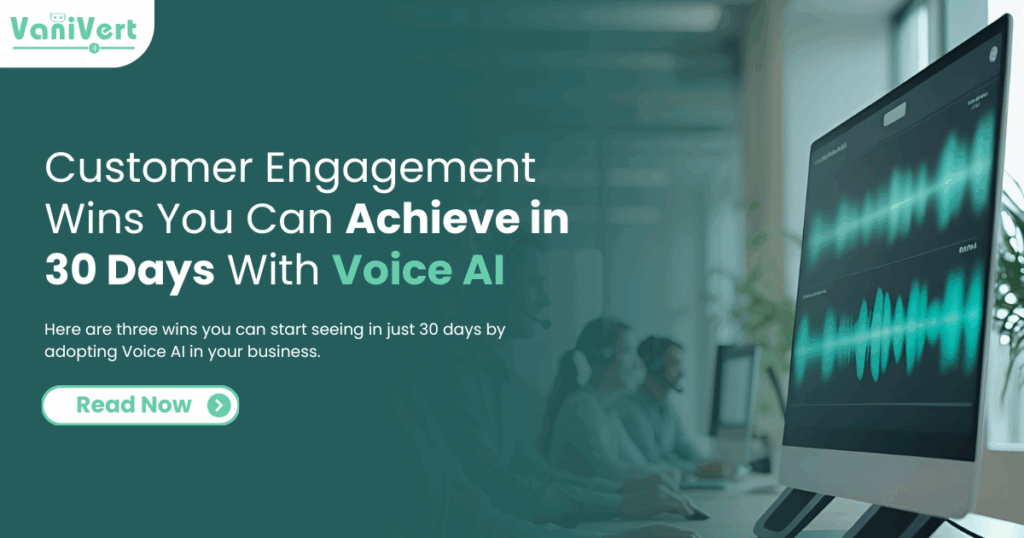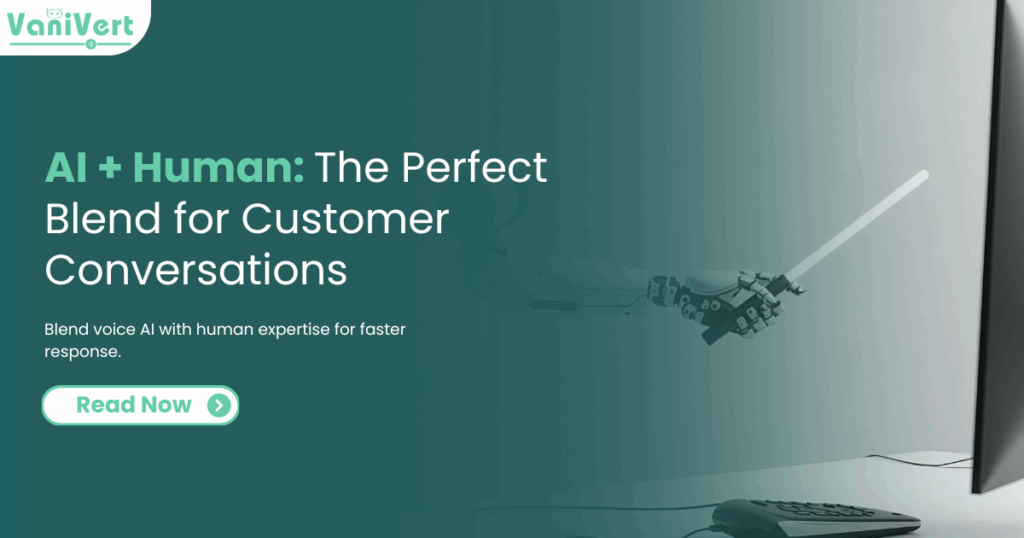
Introduction
The era of one-size-fits-all customer communication is dead. What replaced it is a landscape where 97% of businesses plan to use AI in their customer communications in 2025, and where customer expectations have skyrocketed beyond traditional service levels. The transformation isn’t coming – it’s here.
Today’s successful organizations from BFSI to e-commerce aren’t just adopting AI; they’re building entire communication strategies around it. The statistics are compelling: companies implementing conversational AI report 40-70% cost reductions while simultaneously improving customer satisfaction scores. Voice AI-powered customer engagement alone is projected to drive $47.5 billion in market value by 2034, growing at a staggering 34.8% annually.
The analogy is striking – building customer communication without AI in 2025 is like designing a highway system without considering cars. You might have beautiful infrastructure, but you’ve missed the fundamental shift in how people move.
With 75% of customer interactions predicted to involve AI by 2025, and multilingual voice agents capable of handling complex conversations in real-time, the question isn’t whether to embrace AI—it’s how quickly you can build a strategy that puts you ahead of the competition.
For decision-makers across industries, the urgency is real. Early adopters aren’t just gaining efficiency; they’re redefining customer expectations in their sectors. The time to build a future-ready strategy is now.
The Communication Breakdown: Why Traditional Models Are Failing

Traditional customer communication resembles a leaky bucket. 65% of leads never receive timely callbacks, especially in high-volume industries like BFSI and real estate. Manual processes create bottlenecks where speed matters most – during the golden window of customer intent.
The numbers reveal the crisis: average response times in traditional call centers exceed 8 minutes, while 70% of callers hang up within 60 seconds if faced with silence or delays. In collections, manual calling achieves barely 15% connection rates, while compliance risks multiply with inconsistent human interactions.
This isn’t just inefficiency – it’s revenue hemorrhaging. Every missed call, delayed response, or inconsistent interaction represents lost opportunity in markets where customer loyalty hinges on immediate, personalized engagement.
The AI-First Communication Framework
Future-ready communication strategy operates on a fundamentally different architecture: Intent → Conversation → Resolution. Unlike traditional reactive models, AI-powered systems anticipate needs, engage proactively, and resolve issues in single interactions.
The framework leverages multilingual AI voice agents capable of understanding context, handling interruptions, and maintaining conversational flow. Modern systems achieve sub-500ms response times, eliminating the awkward pauses that break conversational immersion. This isn’t automation – it’s augmented human capability at scale.
Organizations implementing this framework report 2-3x more qualified appointments and 88% reduction in no-shows through automated follow-ups and intelligent scheduling. The strategic advantage comes from consistency: every customer receives the same professional, empathetic interaction regardless of time or volume.
Multilingual Advantage: Breaking Communication Barriers
In India’s diverse market, language is the ultimate competitive moat. Voice AI systems now handle seamless language switching mid-call, enabling businesses to serve customers in their preferred languages without additional hiring.
The impact extends beyond convenience to trust-building. A multilingual AI voice agent speaking fluent Hindi, Tamil, or Bengali creates emotional connection impossible with text-only interfaces. This cultural resonance translates directly to conversion: companies using multilingual voice AI report 45% higher engagement and fivefold reduction in wait times.
For enterprises serving diverse markets, multilingual capability isn’t optional – it’s the foundation of scalable growth that reaches every customer segment authentically.
Speed-to-Engagement: The New Competitive Currency
In today’s market, response time is conversion time. Research consistently shows that leads contacted within 5 minutes are 9x more likely to convert than those reached after an hour. Human teams cannot sustain this velocity across thousands of interactions daily.
Voice AI transforms this equation through instant outbound calling automation. AI agents can initiate conversations within seconds of lead generation, qualify prospects in real-time, and schedule follow-ups without human intervention. This speed advantage compounds: faster initial response leads to shorter sales cycles, higher conversion rates, and improved customer experience.
The strategic implication is clear: speed becomes a sustainable competitive advantage when powered by AI systems that never sleep, never get overwhelmed, and never miss the critical moment of customer intent.
Operational Excellence Through AI Integration
Modern customer communication strategy requires seamless integration between voice AI, CRM systems, and human teams. The most successful implementations create hybrid workflows where AI handles routine interactions and escalates complex issues to human specialists.
Key operational benefits include 24/7 availability, consistent brand messaging, automatic compliance adherence, and real-time analytics.
Organizations report 35-50% improvement in first-call resolution when AI agents have access to complete customer histories and can process information instantly.
This integration approach maximizes both efficiency and effectiveness – AI provides scale and consistency while humans deliver empathy and complex problem-solving where it matters most.
Metrics That Define Success
Future-ready communication strategies require new measurement frameworks. Beyond traditional vanity metrics, leaders focus on conversion acceleration, collection efficiency, and customer satisfaction improvements.
Key performance indicators include: response time reduction (target: under 30 seconds), first-call resolution rates (target: above 80%), customer effort scores (target: minimal escalations), and cost-per-interaction reduction (target: 50-70% savings). Companies achieving these benchmarks report 10-20% increase in ROI and significantly improved competitive positioning.
The measurement approach shifts from activity-based to outcome-based metrics that directly tie communication effectiveness to business results.
Global Parallels: Learning from Early Adopters
Silicon Valley enterprises have already moved beyond experimentation to full-scale AI communication deployment. Leading companies report 75-85% of customer inquiries resolved without human intervention and customer satisfaction improvements of 25-40%.
In regulated industries like financial services, AI-powered communication systems handle compliance automatically while reducing operational risk. Healthcare providers use voice AI for appointment scheduling and patient reminders, achieving HIPAA compliance while improving accessibility.
These global examples provide blueprints for Indian enterprises ready to leapfrog traditional communication models and establish market leadership through AI-first strategies.
Conclusion: Building Your AI Communication Advantage
The future of customer communication isn’t about replacing human interaction – it’s about scaling the conversations businesses could never afford to have. With Voice AI-powered inbound and outbound automation, multilingual capabilities, and intelligent integration, enterprises can deliver consistent, personalized engagement at previously impossible scale.
VaniVert.ai enables this transformation, helping organizations across BFSI, e-commerce, logistics, real estate and many more convert communication from a cost center into a growth engine. The strategic advantage goes to leaders who build AI-first communication strategies now, while competitors struggle with outdated manual processes.
The roadmap is clear: embrace voice AI as core infrastructure, integrate with existing systems, measure impact through business outcomes, and scale successful implementations rapidly. The organizations that act decisively today will set the communication standards that define their industries tomorrow.
Discover how VaniVert can help your organization build a future-ready customer communication strategy that drives measurable growth through Voice AI automation.

